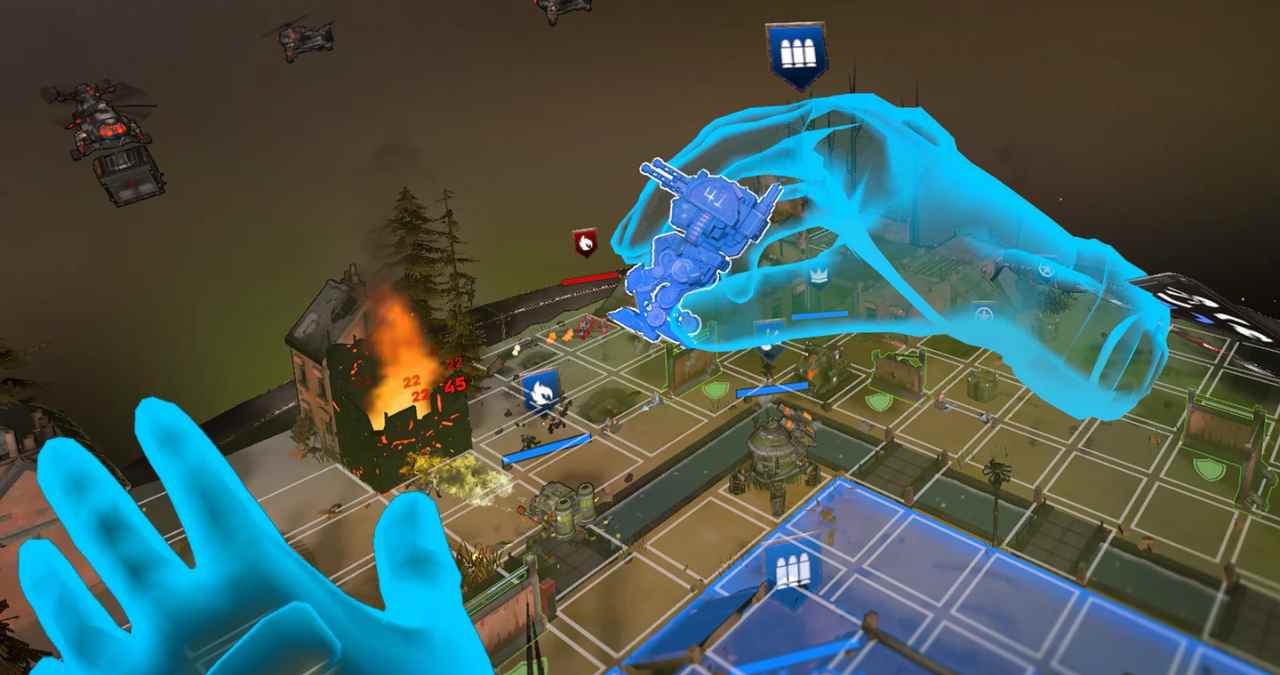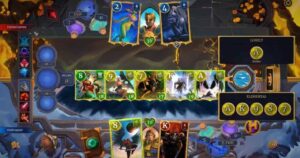Grit & Valor 1949 isn’t trying to replicate a real war. Instead, it builds a what-if scenario just far enough from reality to open up new tactical possibilities. Set in a fictional 1949 where WWII never truly ended, the game leans into Cold War tech, alternate alliances, and gritty terrain-based combat.
Launching this August on Meta Quest, PSVR2, and PC VR, it looks to fill a gap in the VR space: a real-time tactical strategy game with actual unit control, built around full spatial interaction and immersive battlefields.
Real-time tactics designed for VR
At its core, Grit & Valor plays like a hybrid between squad-based strategy and immersive sim. You manage a team of soldiers from a top-down perspective, issuing commands in real time as combat unfolds. But instead of clicking on units, you’re physically pointing, gesturing, and using hand controls to direct movement and attacks.
The VR interface is central. Players interact with the battlefield by manipulating an in-game command table, dragging units into position, managing line of sight, and triggering special actions using motion input. It’s less about speed and more about precision, flanking, cover, and timing matter as much as firepower.
This is not a high-scale RTS with dozens of units. It focuses on small squads in tight engagements. That scale fits well with VR’s limitations, but also opens space for more grounded tactics and focused scenarios.
Alternate history gives room to remix familiar tech
The setting is where Grit & Valor stretches its creative legs. Instead of sticking to WWII authenticity, it shifts into a 1949 where the war escalated into a proto-Cold War standoff. That means players will see gear and tech that never quite existed but still feels grounded, experimental weapons, retro-futuristic armor, and unconventional battlefield layouts.
It also frees the level design from strict historical accuracy. Maps range from bombed-out European cities to bunker-lined snowfields and improvised frontlines in unnamed territories. This lets the developers lean into verticality, destructible cover, and terrain manipulation that wouldn’t fit neatly into a strict sim.
The enemy AI also reflects this alternate setup, using tactics that are part guerrilla, part organized resistance, with scripted moments and unpredictable positioning to push players out of comfort zones.
Platform availability and potential niche
Launching across Quest, PSVR2, and PC VR gives Grit & Valor a wide reach, but it also means balancing performance across very different systems. The Quest version likely comes with visual compromises, while the PC build may unlock more advanced effects or smoother input response.
Still, the design seems tailored more toward smart interface use than graphical power. What matters here is spatial control, battlefield clarity, and responsiveness — not flashy particle effects or cinematic cutscenes.
VR hasn’t seen many games explore this tactical niche. Most strategy-oriented experiences lean into turn-based pacing or abstract control schemes. Grit & Valor attempts something different: a grounded, story-driven war game where you’re not just a commander, but a presence on the battlefield.
If the mechanics hold up across platforms, it could quietly carve out a space in a genre VR hasn’t fully embraced yet.
Virtual Reality Explorer & Game Reviewer
Always the first to plug in. VRSCOUT dives head-first into the most immersive VR worlds, analyzing mechanics, comfort, innovation, and that elusive “presence” factor. If he says it’s worth it, it probably is.




